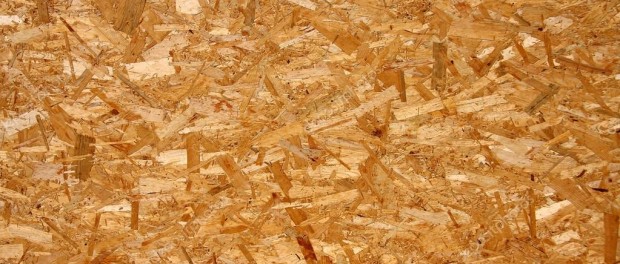Plywood vs. OSB (Oriented Strand Board)

by Chris Swanson
Plywood vs. OSB (Oriented Strand Board)
As an estimator on projects both new construction and rehab I run into Oriented Strand Board installed as the sub floors on a large percentage of decks. Oriented Strand Board commonly referred to as OSB is not an approved substrate for most of the deck coating manufacturers. There are some manufacturers that will stand by a coating installation over this surface but they are limited. This substrate, can be problematic over time, even if you use a system where a manufacturer approves the installation. Typically in the design process of any wood deck or balcony you want to keep in mind a variety of details that include slope, railing, drains, finish etc.; another important component in deck construction is a proper substrate. Most decks and exterior walking surfaces require a certain fire rating and class by the ICC (International Code Council) for a pedestrian traffic approved deck area. The ICC standard is a one hour fire rating with a class A grade. This dictates a set of rules and one of those rules includes the subfloor being a minimum of 5/8” thick grade Plywood, OSB is not mentioned or included in this set of rules at all. Although 5/8” thickness Is what the ICC states as the minimum thickness most waterproofing manufacturer and structural engineers recommend 3/4”- 1 1/8” thickness CDX, exterior grade plywood.
A lot of the time framing contractors, general contractors, and property owners are not aware of the requirements by the ICC so they will use OSB to frame their decks and balconies. If the issue is caught at the framing stage it can be corrected before a coating installation. In order to remedy this condition, it is recommended that 5/8 inch plywood be installed directly over the existing OSB. An even better option is to completely remove the OSB and re-sheet the deck with exterior grade CDX plywood. The price difference between plywood and OSB definitely plays a role in why this material is preferred. Unfortunately the costs for a substrate failure, removal, and rehab exponentially increase costs so in the long run you will see far more success allowing for a plywood budget from the start vs. devaluing an important piece of your deck’s construction.
One of the biggest problems with OSB is it retains moisture and swells. If exposed during inclement weather or a failure in coating, it can deteriorate. It will never fully dry out and the moisture will never completely evaporate from the material. The moisture saturates in OSB vertically from top to bottom instead of spreading horizontally throughout the material which can weigh down certain areas of the substrate and create problematic areas where the swelling is seen at seams and edges. After time this contraction and expansion from moisture can create softness, lines in surface coating, dry rot, and mold. OSB is made up many different strands of wood particles that cause it to have a softer and more impressionable feel. The resins used to create OSB have raised questions regarding the potential for OSB to emit volatile organic compounds (VOCs) such as formaldehyde. With The reaction to those resins have to other deck coating resinous membranes it can cause a delamination or failure in a deck coating system. This is another reason why most manufacturers, will not approve the use of Oriented Strand Board. The last reason why OSB should not be used, is it does not have the added support from the plys that are in plywood. Plywood is composed of several layers (or plys) that when glued together offer superior strength. When plywood rots out, it provides you with a warning. It gets soft and spongy, but you will not fall through. When OSB fails, it completely disintegrates- You will fall through the deck.
Plywood is different because it uses sheets of wood bound together with adhesive to form a composite solid based material. Here we see that plywood has several important benefits:
- it reduces wood to split when nailed at the edges
- it reduces the amount of expansion and shrinkage caused by thermal fluctuations
- provides improved dimensional stability across all directions.
There is usually an odd number of plies, so that the sheet is balanced—this reduces warping where OSB has a huge disadvantage. Because plywood is bonded with grains running against one another and with an odd number of composite parts, it is very hard to bend it perpendicular to the grain direction of the surface ply. With plywood you have the upper hand because when it comes into contact with moisture it swells consistently across the sheeting and it will return to its normal dimensions when it finally dries out rather than continuously holding a swell at the edges or seams.
In regard to longevity, durability, flexibility, and overall performance when plywood is fastened correctly to a properly framed deck area it will always outlast OSB.
